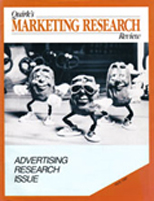Heavy drinking varies widely by age, sex
Approximately, seven in 100 Americans drink two or more alcoholic drinks per day and heavy and potentially harmful drinking is much more likely among men and young people, a federal survey shows.
These were two of the findings of a telephone survey on drinking habits conducted by the national Centers for Disease Control (CDC). The participants from Washington, D.C., and 21 other states were asked in 1985 whether they averaged two or more drinks a day.
Only 7% of the 25,221 surveyed drank that much, leading the CDC to conclude that a level of two drinks a day is "higher than that experienced by the large majority of adults."
When broken down by state, sex or age, survey findings varied significantly.
More than 10% of the men surveyed had two drinks a day, compared to less than 3% of the women. In most states, heavy drinking declined noticeably with age.
CDC researchers believed that most of the people averaging 60 drinks a month, or two a day, are drinking every day, says David Williamson, a specialist with CDC's nutrition division. "It's not clear which is more harmful, 60 drinks in a month or three days... (or) consuming every day," he says. Heavy, heavy binging can be very harmful also."
Although it is not absolutely certain, people who average that kind of drinking are far more likely to suffer alcohol-related problems, Williamson says.
The main purpose of the surveillance, says Williamson, is to provide state and local health authorities with a look at heavy drinking in their areas. More than 30 states are participating in the continuing program.
Medical costs are big consumer worry, survey shows
Approximately 82% of consumers are very concerned about medical costs despite the decreasing concern about price, quality and advertising for other goods and services, a recent poll reveals.
This concern is up from 69% in 1977, says Barry E. Goodstadt of Opinion Research Corp.
Goodstadt says the worry is "not surprising, given the considerable increase in real terms in medical costs." The poll results were presented at the annual consumer assembly of the Consumer Federal of America.
Signs of this concern has spread to Congress as well where legislation is being considered to provide assistance to those facing long-term medical expenses.
Other poll findings were on a positive note. Over the past 10 years, those who worried a great deal about poor product quality declined from 48% to age category. If desired, you can get projections of all points on each axis; these help interpret the dimensions of a given map.
Respondent numbers consisting of any four alpha-numeric characters can be printed as cluster group member identifiers; obviously, this is a tremendous help for further data tabulation and analysis. Axes can be tested for statistical significance in explaining variance for a given data set. The current research and interest in CA have given researchers these and many other analytical enhancements and opportunities.
Some of many product categories to which some of your peers have applied one or the other major features of CA include:
- Consumer durables
- News media
- Financial services
- Health services
- OTC health products
- Retail outlets
- Names of a new product/line extension
- Food products
- Clothing
- Travel/tourism
Since this is a non-technical introduction to a fairly technical subject, we won't show you the inevitable "squigglies" that appear in some of the more technical journals. However, if you are so inclined, drop a note to the managing editor of this publication or me and a bibliography will be sent to you. Most of the sources have enough complexity to satisfy anyone, in addition to showing some very nice detailed examples with actual computer output. I'll be happy to send you a sample of either or both types, too, at your request.
Not a panacea
As with any relatively new and fascinating technique, we should avoid the temptation of fitting a given study into CA where it's unwarranted. CA is not a panacea; used wisely, however, we can now do a much better job of analyzing and interpreting particular types of data from marketing research studies than we could a few years ago. Hence, our decisions are better and that's really what this business is all about.
